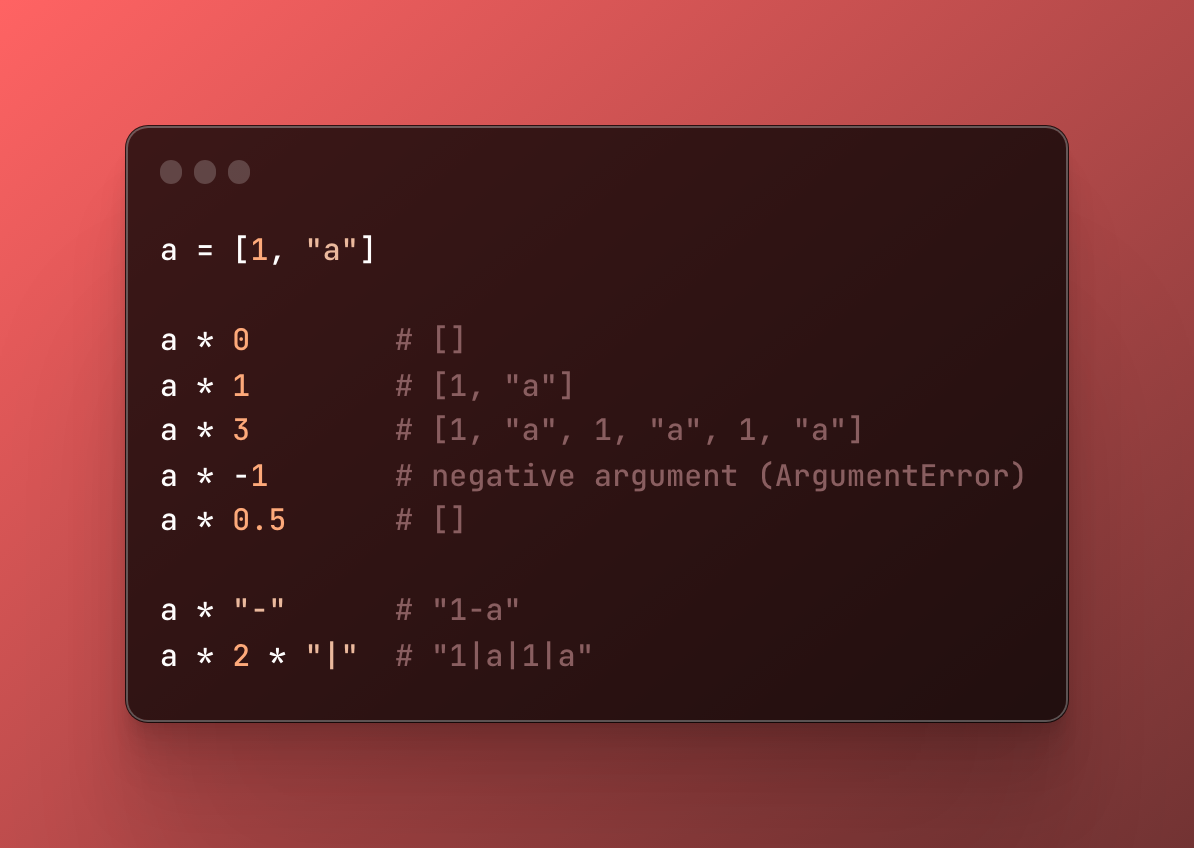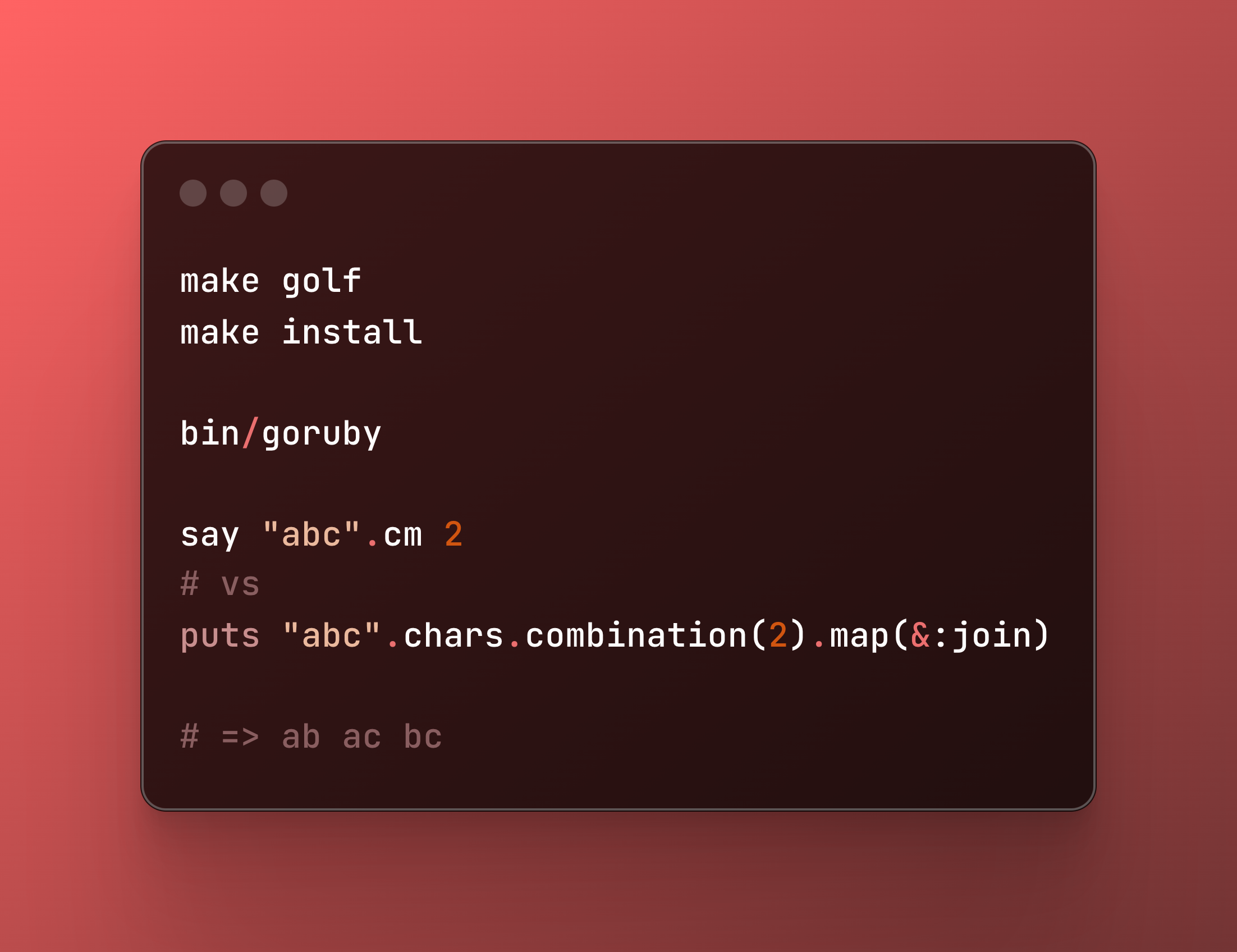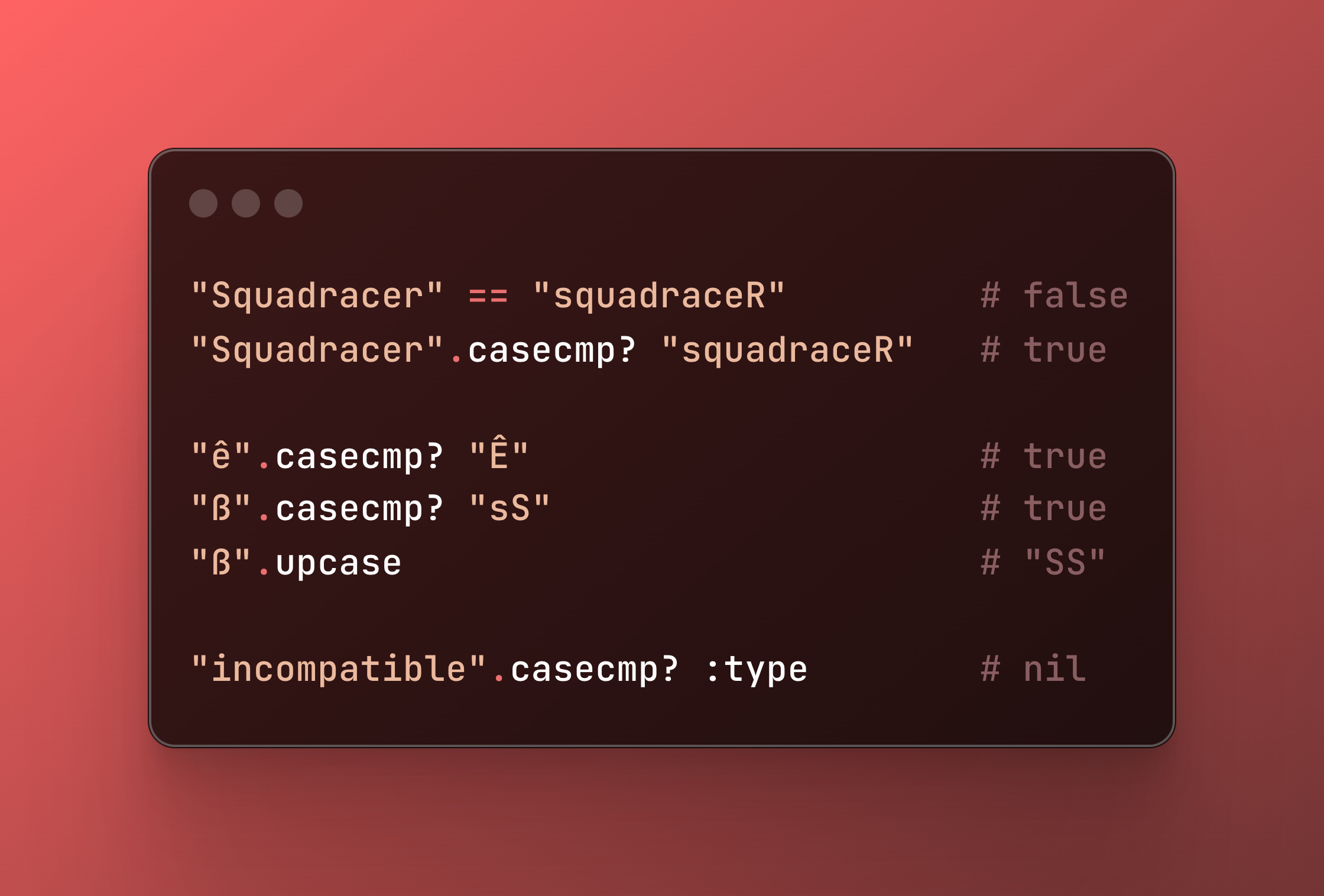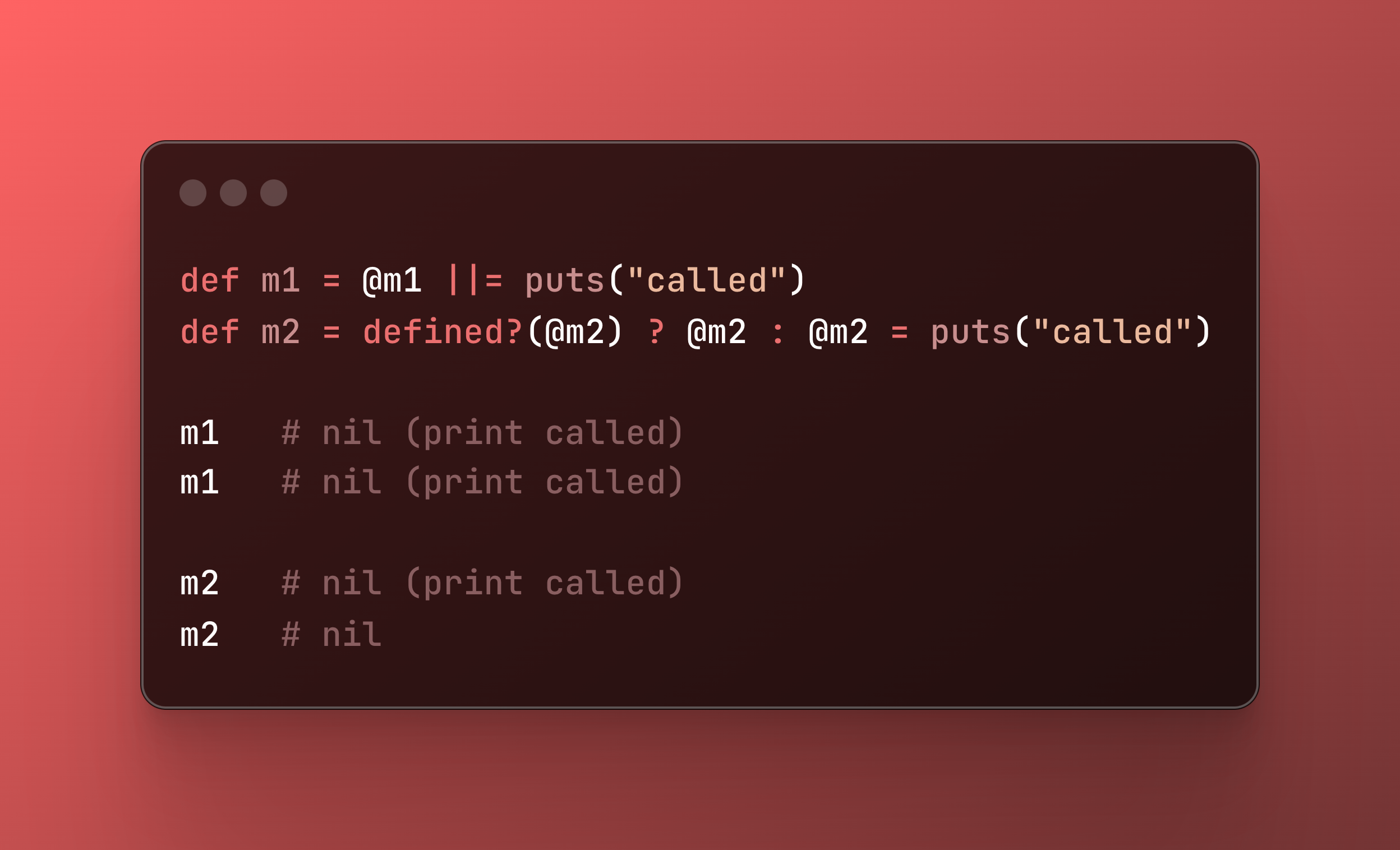Why so many methods of comparison?
equal?corresponds to instance equality. Is it the same object in memory?==andeql?are in most cases aliases. They correspond to the « natural » equality of object values (Exception for Object: alias forequal?).===is called « case equality ». It is this method that is called in acase...when. By default, it is an alias of==.

The === can be seen as a notion of belonging: do you belong to what I represent? ⚠️ This method is generally neither reflexive, symmetrical nor transitive.

The documentation states: « The eql? method returns true if obj and other refer to the same hash key ».
In practice, this often translates into object type equality. In a way, eql? is the equivalent of Javascript’s === (and not Ruby’s ===!).
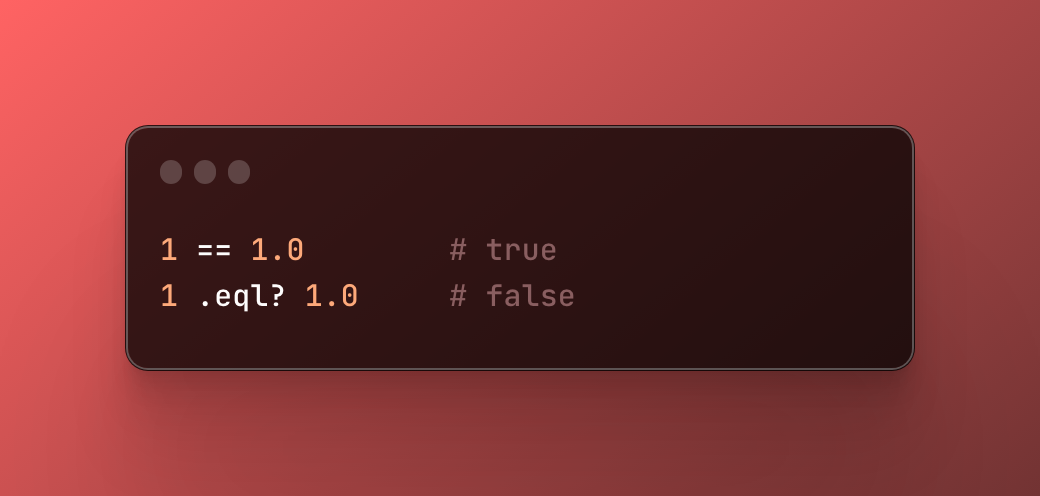
⚠️ Counter-examples can be found on some implementations of the eql? method that don’t respect the definition.
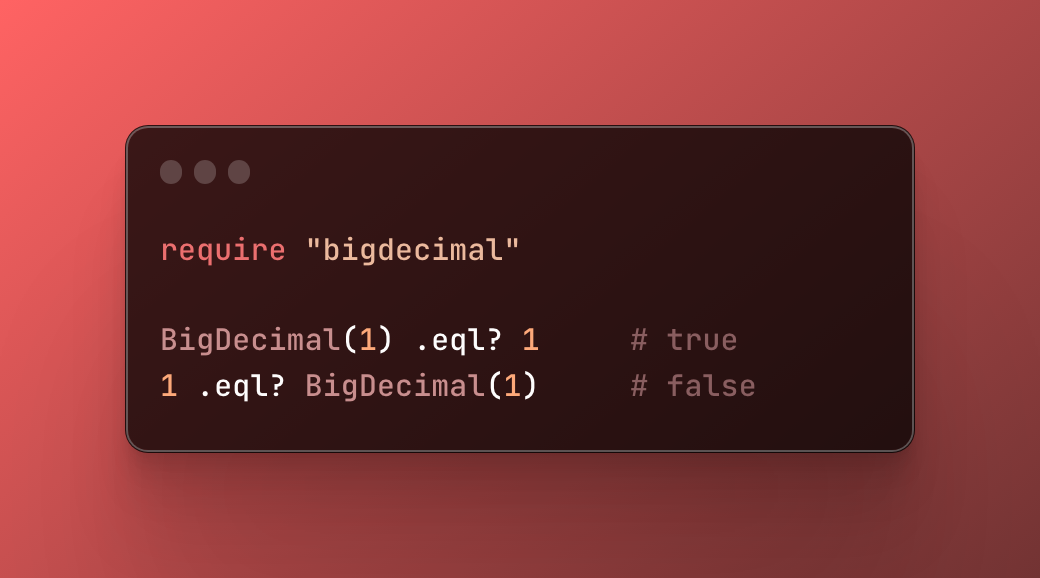
Links to Ruby documentation for ==, eql?, equal? and ===.


